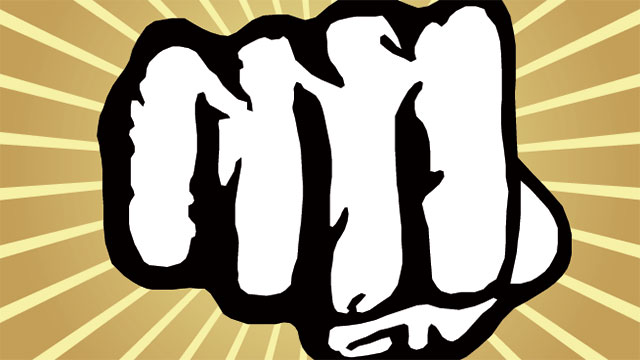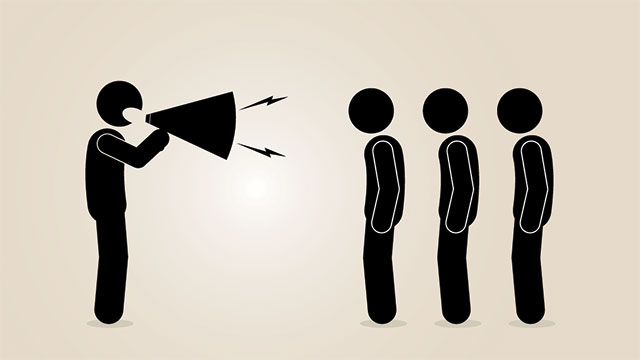Under the right circumstances, anyone can turn into The Hulk and get lost in their seething rage. While anger can make you look crazy and cause all sorts of problems, you can also use it to your advantage for a more productive life.
Title image remixed from an original by Sammy. Other images by happydancing (Shutterstock), Ditty_about_summer (Shutterstock), Eugene Ivanov (Shutterstock), iluistrator (Shutterstock), Sergey Nivens (Shutterstock)..
As kids, my sister and I had different approaches when something bad happened: I got angry and she cried. A fit of rage often left me with a trip to my room, whereas her crying earned her waves of sympathy. Even if the causes were exactly the same, she always won with tears. For example, if I was upset that I didn’t get meat loaf for dinner and yelled, I’d get in trouble. If she cried about it, our meal plan would change. One day, my dad took me aside and told me this was unfair. He explained that my reaction came from the same place as my sister’s but people reacted to anger differently. He told me it was OK to get upset, but that if I reacted that way I wouldn’t ever get what I wanted because anger makes people look crazy. As a result, I learned to use my rage to my advantage. You can too.
While this post will focus on a variety of things I’ve learned throughout my life as an angry young man, I’m no therapist. Fortunately our friend and frequent contributor Roger S. Gil is! Throughout the post, he’ll provide his expertise to supplement my rage-filled experiences with good advice.
Know What Your Anger Looks and Feels Like

You change when you get angry. Your body can get hot, your muscles tense and breathing short. When I get mad, I sometimes even stop breathing altogether, and it takes a few moments before I realise that I’m missing out on oxygen. As Roger notes, you can’t do much about your anger if you don’t learn to recognise the warning signs:
Be mindful of your body. If you have health issues then unchecked anger can exacerbate them considerably. Be wary of feeling “hot” since this usually indicates a rise in blood pressure. Take note of your pulse because our heart rates elevate when our freeze, fight or flight response is activated. Tensing your muscles or gritting your teeth is also an indicator that your anger is escalating and that rage may be imminent. Lastly, if you find yourself short of breath or breathing heavily then you’re getting ready for a serious fight.
I grind my teeth like crazy when I’m stressed, and I even have a mouth guard for sleep so I don’t cause any lasting damage. While you may have a very clear way to identify your anger-derived stress, not everyone does. Muscle tension manifests itself in a variety of different ways, but regardless you’ll almost always find it in one spot: your butt. When you get angry or stressed out, you hold tension in your pelvic muscles and generally can’t tell. That’s because the tension is subtle, and most of us don’t think about our butt unless something’s coming out of it. If you struggle to identify anger-related tension in your body, ask yourself this ridiculous question every few hours: “How does my bum feel?” When you check, you might find you’re more tense than you think and need a moment to relax.
Calm Down

You can’t use your anger effectively or productively if it controls you. It used to get me stuck in my room, unable to do anything but stomp around like an idiot. Until you learn to calm down when necessary, your anger can’t help you at all. If you have trouble reigning in your rage, you probably don’t have the emotional “tools” necessary to relax. Roger explains a few ways to do just that:
To address the physical signs of anger (e.g. elevated heart rate, muscle tension, shortness of breath, etc.) it is often helpful to engage in what I like to call “intentional relaxation techniques”. One example is to focus one’s attention on your hands and to clench them using about 75 per cent of your strength for 5 to 10 seconds at a time while counting. Then you take a deep breath and then repeat for about a minute or two until you feel the physical signs of anger start to subside.
You can also engage in deep, slow, and controlled breaths while focusing your attention on something in the environment, such as a spot on the wall or floor, or something on your desk. A third way would be to engage in exercise (assuming you’re able to) or to engage in a distracting activity, like going for a drive while blasting non-angry music, or engaging in a hobby. As always, all physical activities should only be used if a person is healthy enough to do so and only if a physician says that the person is healthy enough to do them.
Which techniques you can employ will obviously depend on your current situation. Whenever you get very upset and don’t feel like you can control yourself, you should always do what you can to extricate yourself and take measure to calm down. When possible, exercise can help distract you and release a lot of your tension but you really just need to find any distracting activity when you can’t exercise. Roger offers a few suggestions:
Engage yourself in an engrossing activity, such as playing a game on your phone or making a cup of tea/coffee so that your mind can focus on neutral tasks. Journalling is another strategy. In other words, write out your thoughts and feelings while making sure not to ruminate on the source of anger. I find it helps clients to write about this and describe why they should calm down. Even a detailed entry about something relaxing, such as a happy memory, can help.
If you can’t leave an argument or hostile environment, however, you can still squeeze your fists and breathe. Practise this during controlled moments of anger or when you’re alone and feeling fine. If you make these techniques a habit, you’ll have an easier time employing them subtly in any situation.
Turn Your Anger into Motivation

Nobody enjoys a harsh reprimand and string of hurtful words, or even rejection. You might get mad when you encounter the negative parts of life where others just feel upset. That’s OK, because you can use it to motivate you. Whether you want to prove yourself or seek revenge, the best way to get either is to be great. Let your anger help you get there. It can give you energy, as Roger explains:
Channelling anger is a helpful way to coping with it. It helps when the activity that needs to get done is physical (requiring you to use your hands or body) since anger tends to speed us up. It’s important not to do anything that requires too much thought since our minds are likely going to be clouded by the anger and we will not be able to make sound choices. If the source of the anger is performance related, one can use it to fuel their desire to perform better rather than focusing on mistakes or the actions of others. Building on the notion of focusing on improved performance, one can allow their anger to fuel some solution-focused brainstorming. Telling yourself that acting on your anger is counterproductive and then trying to identify some possible solutions to your problem is a great way to take the mental energy that would be expended on being angry and putting it to good use.
I recently started playing tennis for fun, knowing that I’d never become exceptional, because I began too late in life. I’ve become better and have a very minor talent for the game, so when I play poorly I now know and I get down on myself. When up against an opponent with far more skill, I find it hard to do much else than get angry. Rather than let that anger out, I take note of it and use it to fuel my desire to practise more. Whether in sports, work or everyday life, we can get complacent with our skill and forget that we always have some room for improvement. When you start to get mad, get better instead.
Make Your Arguments Productive

You will have to argue sometimes, and you’ll have to do it without losing your head. You can’t escape confrontation and you can’t resort to handling it like Bruce Banner. Productive conflict is a varsity-level skill in the game of anger management, but one you nonetheless ought to learn. In order to get anywhere, you need to practise your calming techniques. In addition to what we’ve previously discussed, Roger recommends slowing yourself down:
This requires a great deal of self-awareness and self-control. In situations where you’re trying to resolve an issue while angry, you should first do a “personal status check” to see how your body is responding to the anger. Are you getting hot? Are you clenching your teeth? These are all outward signs of anger that we can have some control over. Slowing down your rate of speech while artificially lowering your voice is a common technique used in crisis management. It not only has the effect of slowing down your anger response, it can also have the wonderful side effect of having the other person lower their voices since that is the only way that they can hear you.
Roger also suggests you may want to explain the time you’re taking to avoid any confusion or additional frustration:
It is then a good idea to follow it up by acknowledging that you don’t want to get angrier and that you want to slow the pace of the conversation so that you can focus on the subject at hand and by recognising how the other person feels without judging them. For example: “When you say that you don’t care about chocolate pudding, it upsets me. I don’t want to get to upset and I’m not taking anything away from your feelings toward chocolate pudding. Just know that I want to focus on processing why you dislike it so much.”
In addition to taking your time, ask questions. Heated arguments blow up because people think less and feel more. When you ask someone a question (why do you feel this way? and what kind of resolution are you looking for?), however, you require them to think about their response. On top of that, it makes you a caring listener and gives you more time to formulate a calm response. This can help defuse anger and even allow the other party to realise they’re wrong all on their own.
Know How to Handle a Meltdown

Despite your best intentions, emotions will still overtake you from time to time. When you find yourself enraged and unable to calm down, have a plan in place. Roger recommends the following:
-
Put physical distance between you and other person. It’s likely that you’re about to be emotionally hijacked by your anger and that words will not be enough to deter any ill-advised behaviours on your part.
-
Appeal to friends or family that are nearby so that they can “run interference” for you. Tell them that you’re about to flip out and need their help to calm down. Tell them not to become embroiled in the conflict but to try to talk you down as best as they can.
-
Tell the person to back off and then remain quiet. If at all possible, shift your attention to something else and don’t stew in angry thoughts. Do not look at the person or entertain any comments they might make. It’s more foolish to have a pair of handcuffs slapped on you than to look like you’re afraid of a fight. When appropriate, you can always approach the argument with a level head later.
-
Know that volatile situations usually end up being about having the fight instead of being about what led up to them. If reaching the “point of no return” is imminent, then you must flee the situation, because you will probably not be able to control your actions from that point forward.
If you fear a meltdown, remember this one word: disengage. Like Roger advises, if you can’t use your rage productively you shouldn’t use it at all. You won’t achieve mental harmony just from reading this advice, of course, so make sure you practise managing your anger on a regular basis. Having a little fury can be a good thing, but you just have gain the right focus and learn to control yourself. That’s what all good warriors have to do, even if the fight exists solely in their mind.
=A very special thanks goes out to Roger S. Gil, MAMFT, for his integral contributions to this post. For more, follow him on Twitter and check out Luvbuzd, his podcast.
This post is part of our Evil Week series at Lifehacker, where we look at the dark side of getting things done. Knowing evil means knowing how to beat it, so you can use your sinister powers for good. Want more? Check out our evil week tag page.

Comments